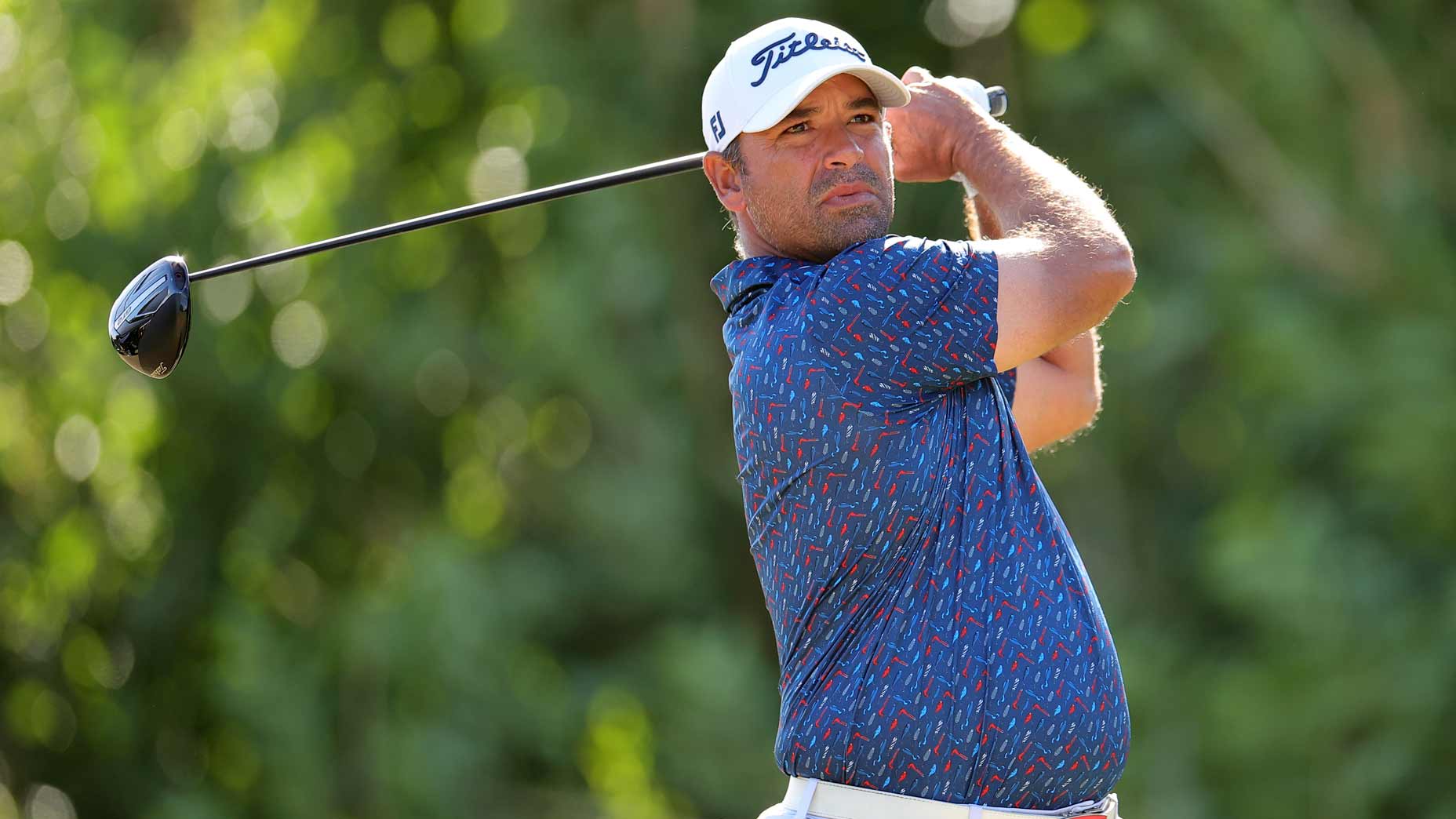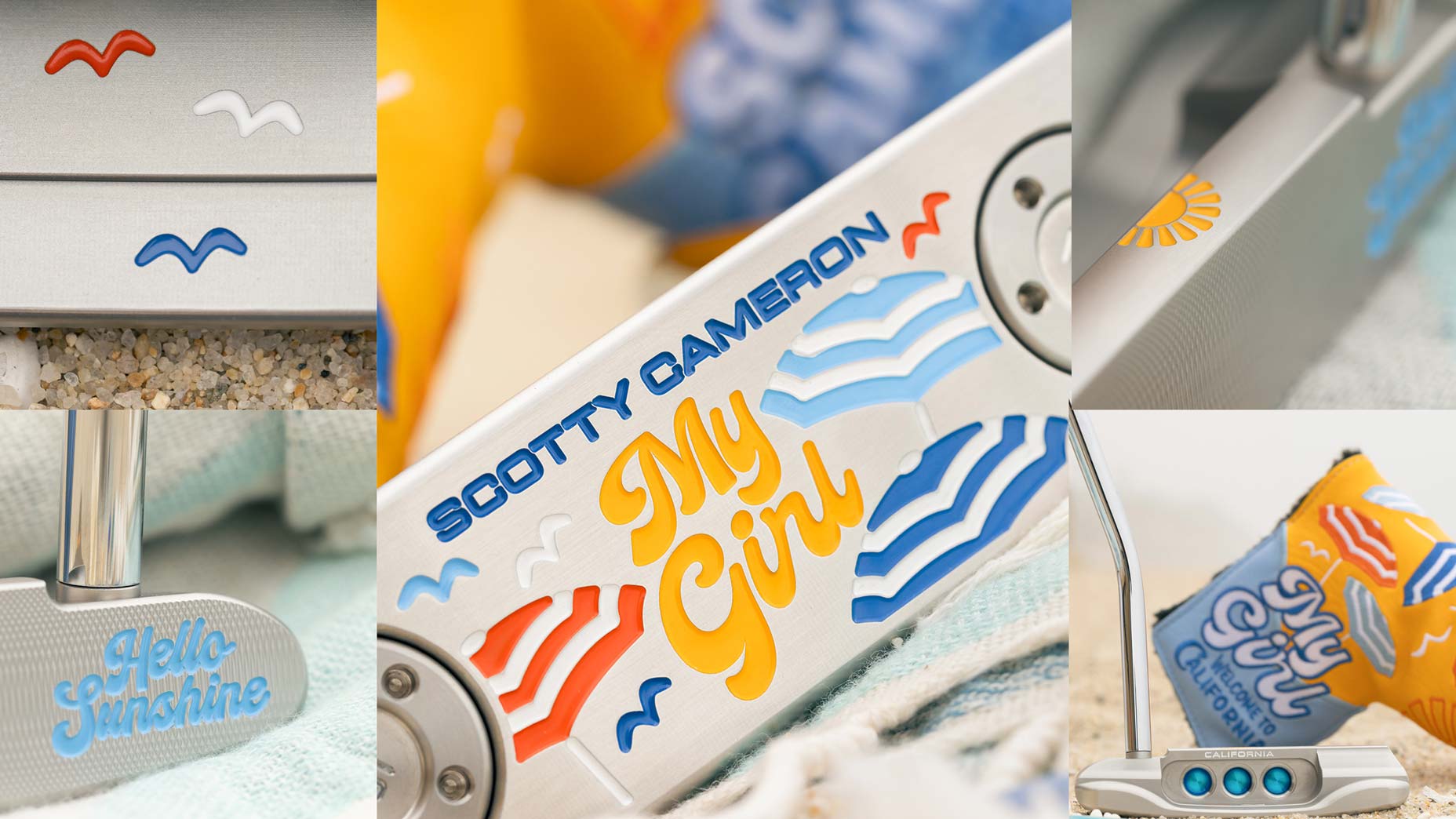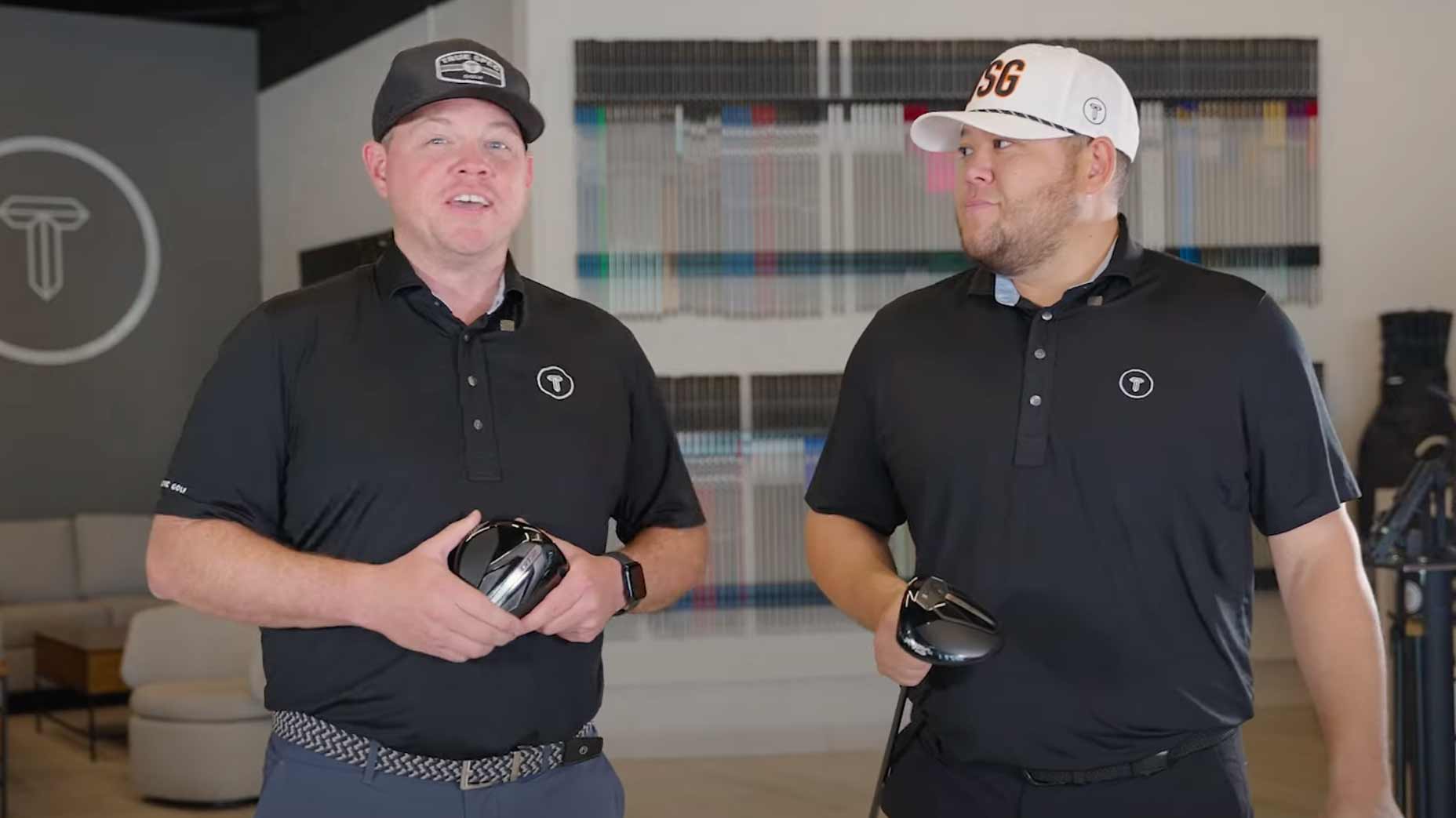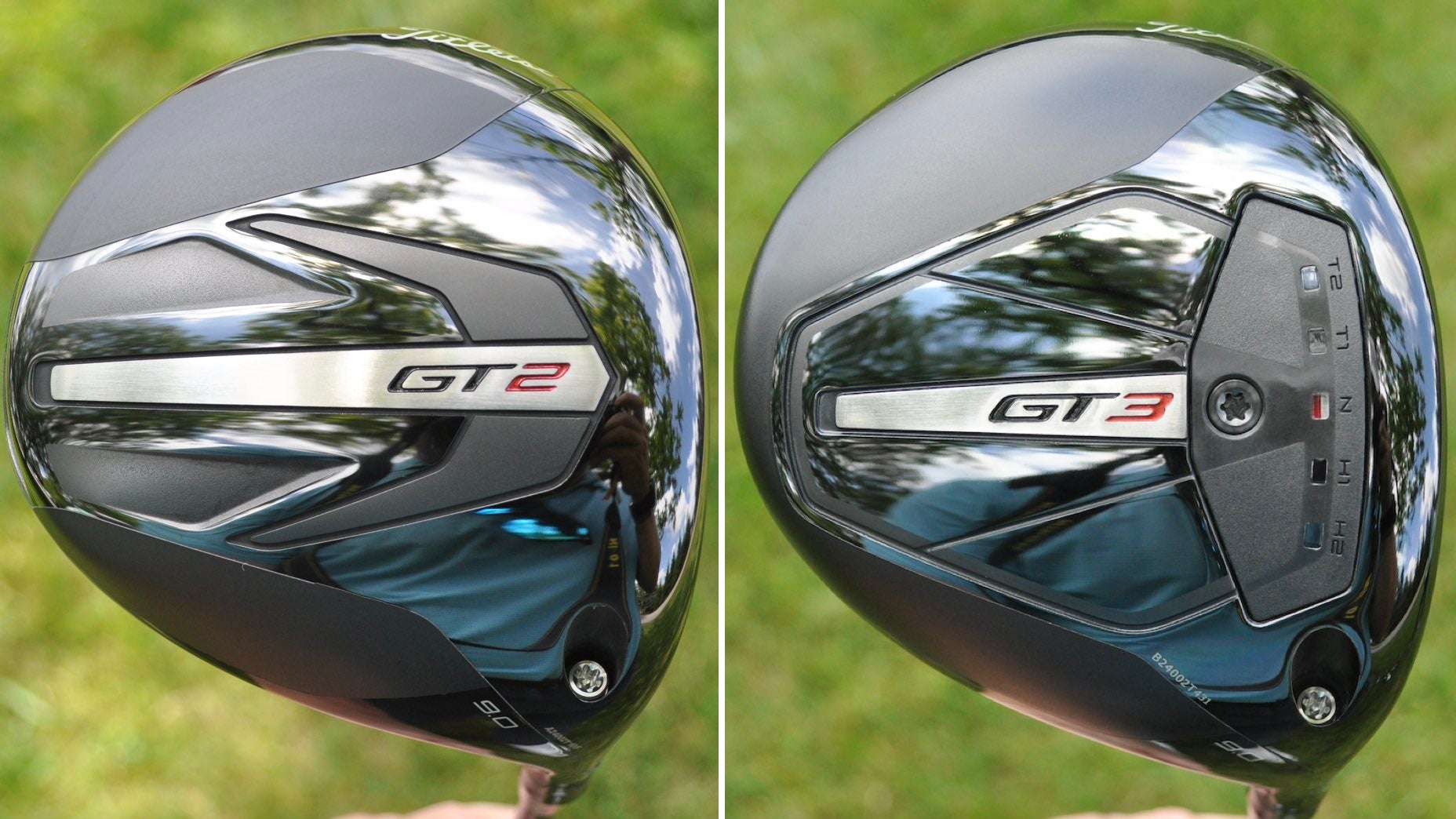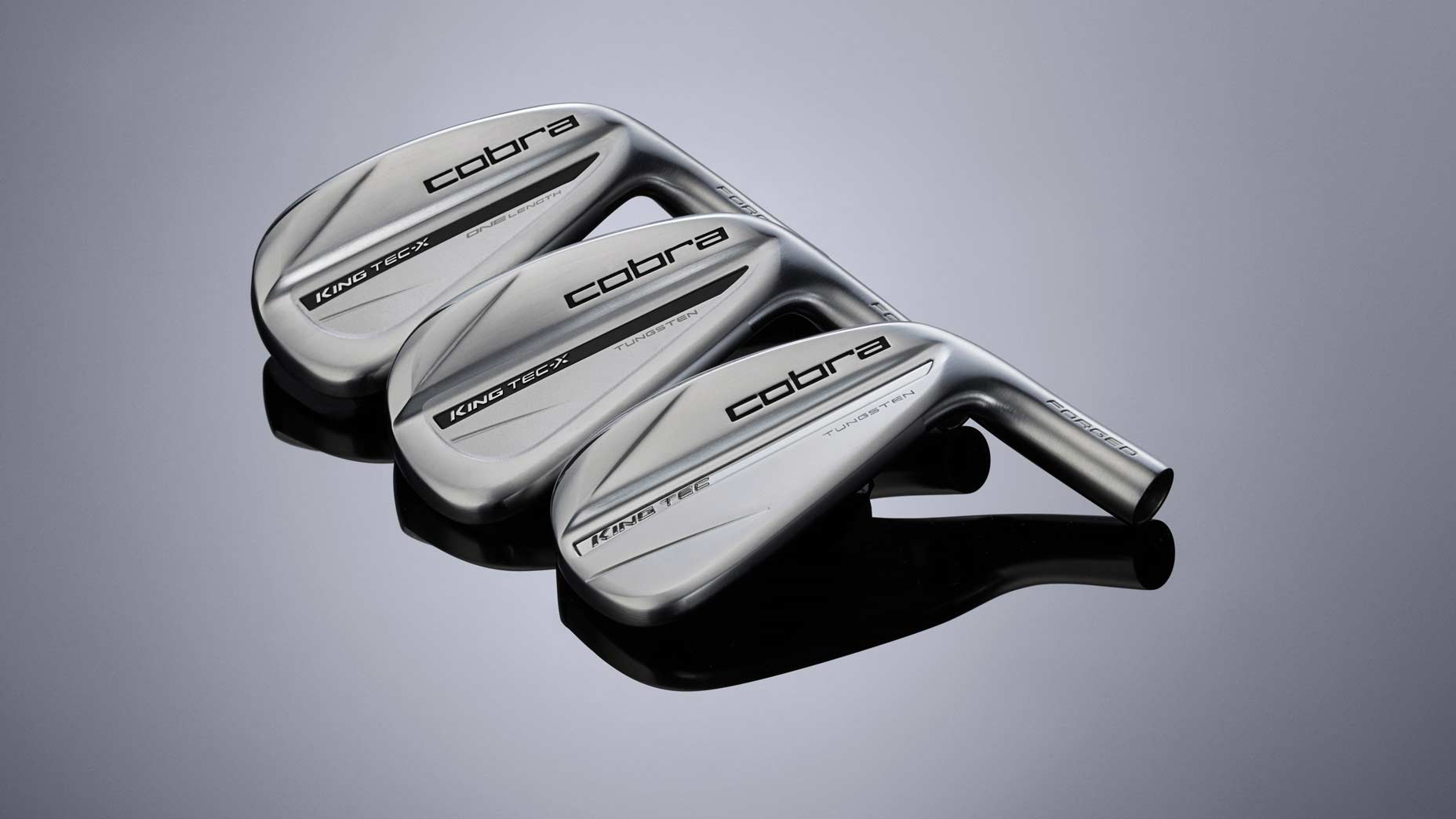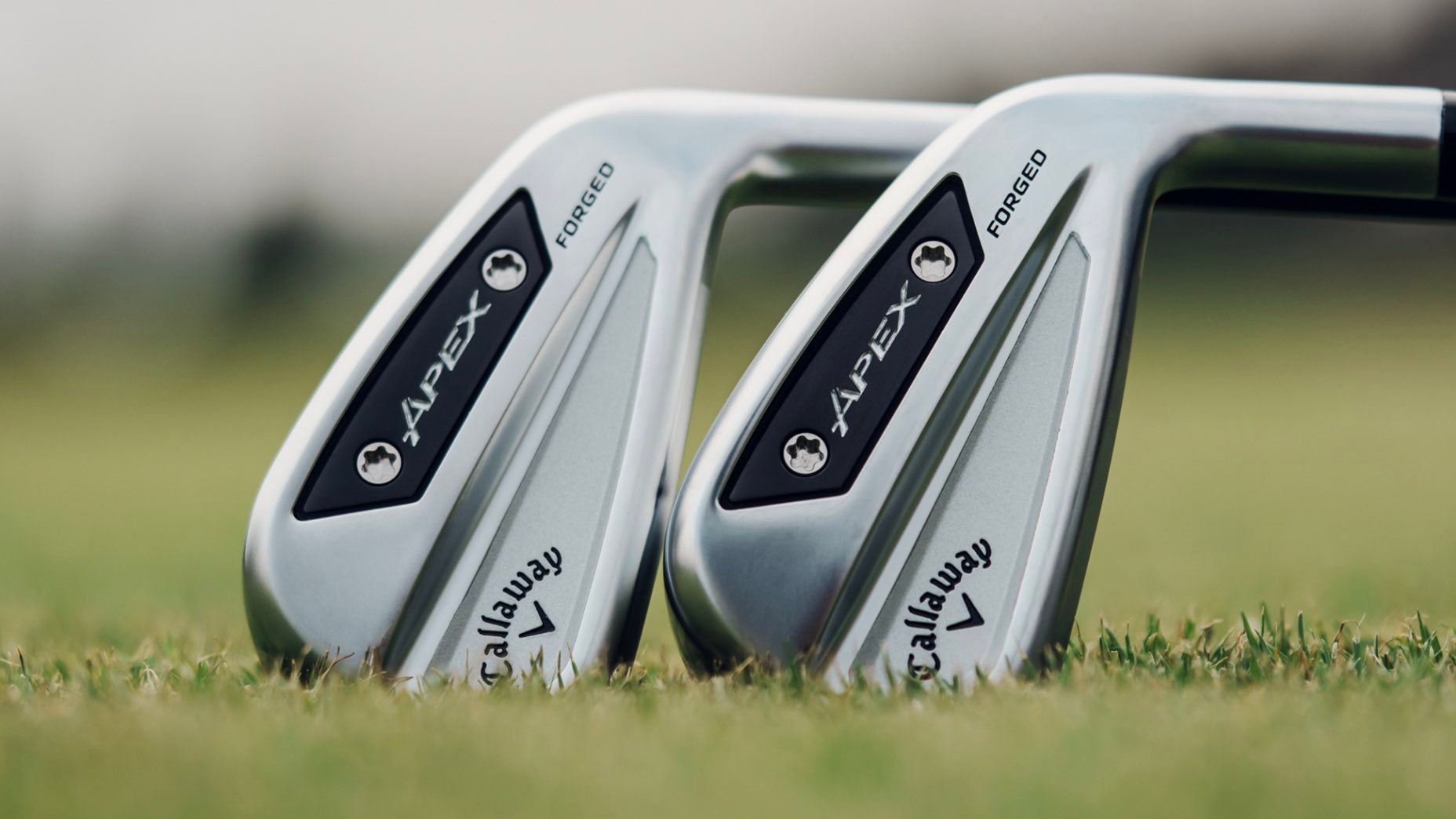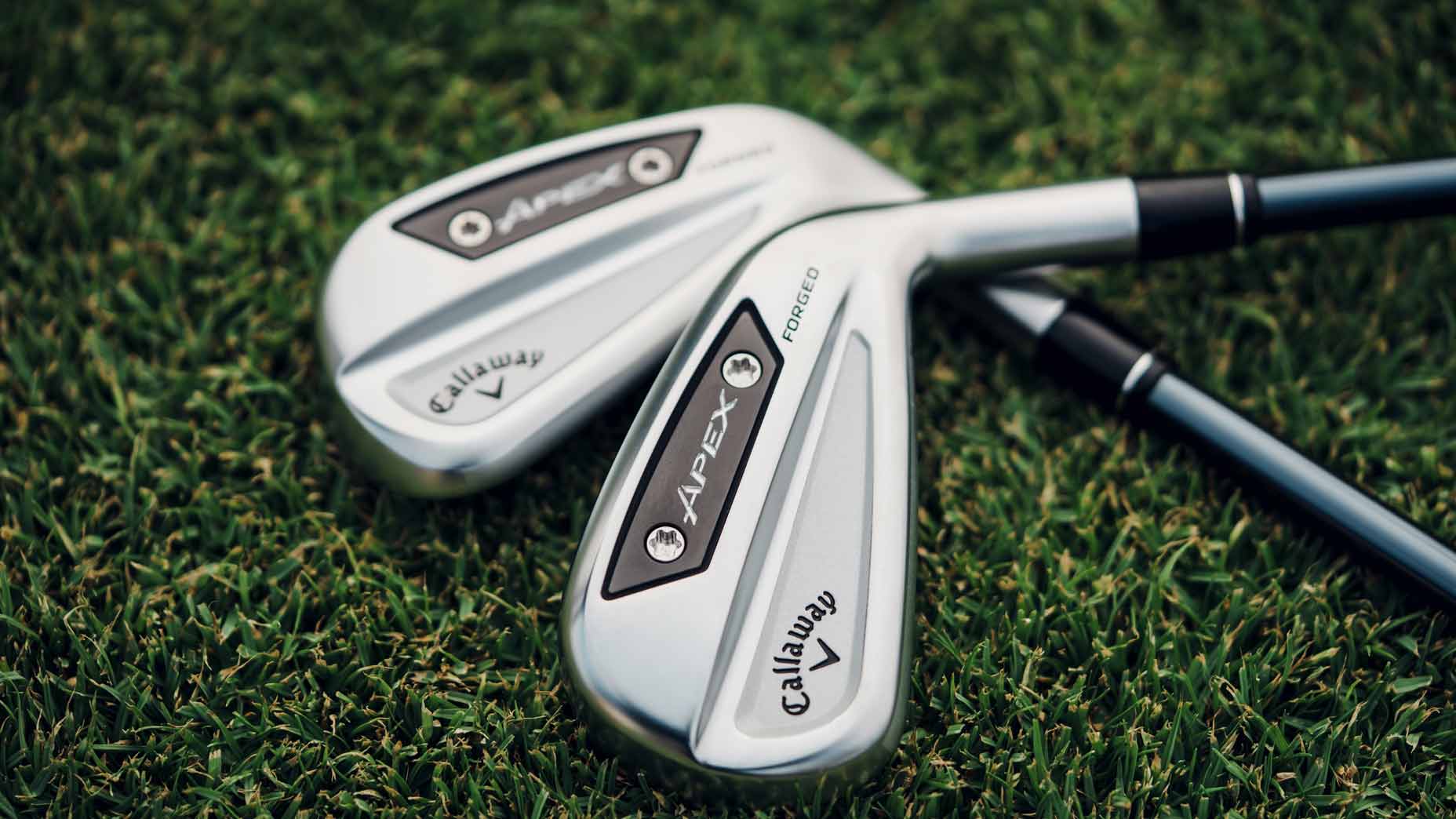Building the perfect mixed iron set? A Tour rep offers 2 smart suggestions
- Share on Facebook
- Share on Twitter
- Share by Email

These days many Tour pros carry multiple iron models in their bag.
Getty Images
Look through bags of the Tour’s elite and you’ll notice a gear trend: Many have at least two different iron models in the bag. As equipment manufacturers continue to produce innovative iron designs, many have started to pay particular attention to how different models blend from an offset and loft perspective.
More than ever before, golfers are warming to the idea of blending different iron sets — the most common composition being compact mid and short irons with forgiving long irons. Of course, unconvetional blended sets also exist.
It’s a trend that everyone from Collin Morikawa and Justin Thomas to the 15-handicap at your local club is embracing. In Thomas’ case, it’s a single Titleist T100 4-iron at the top of the set that best compliments his 620MB’s; for others, it might take several models (as in Andrew Tursky’s case) to achieve the ideal gapping and visual preferences.
“[Justin] plays Titleist 620 MB in the 5- through 9-iron because those are areas where he wants to work and shape the ball,” Titleist’s lead PGA Tour rep J.J. Van Wezenbeeck said on the latest episode of GOLF’s Fully Equipped podcast. “But he put the new T100 4-iron in play because he’s looking for high launch and forgiveness. There are breaking points in players’ bags, but everybody breaks at a different spot.”
We’ve discussed some of the things to look for when creating a blending iron set in the past, but Van Wezenbeeck offered a few fresh takes that are certainly worth considering.
Take a peak
If you’ve never heard the term “peak height” before, it’s a launch monitor measurable that tracks the ball’s apex. Your apex shouldn’t fluctuate much between clubs, which is why Van Wezenbeeck relies on the number to determine if a pro he’s working with has a trajectory hole in his set.
If the ball is launching too high or low with a specific club, the apex will differ greatly from the next club in the set. When you’re building a split set, that’s where you could have a potential problem on your hands.
“If you’re at a fitting, peak height is a great way to do it,” he said. “Look at your 8-iron peak height, 7-iron peak height, all the way through the bag. If you, say, see your 5-iron peak height drop, you might want to look at a model that helps launch it higher.”
It all comes down to finding the best point to break your set and add a different model. Adding forgiveness at the top of the bag is a nice-to-have, but if the long irons are launching out of a significantly higher window, you might wind up with a 4- and 5-iron that offers similar numbers. At that point, it probably doesn’t make much sense to blend with that particular model.
Smart speed
You’ve likely heard of loft gapping before. But what about “ball speed gapping”? According to Van Wezenbeeck, keeping tabs on your ball speed numbers as you build a split set can help highlight potential issues during the building process.
Similar to how you want roughly 3- to 4-degree loft gaps between each iron, you want similar ball speed gaps from one club to the next as well.
“When you’re trying to get that 5 or 6 miles per hour between clubs, if you see it’s 2 miles per hour going from a 4-iron to a 3-iron, you need to find something that’s going to give you a boost in speed,” he said. “If not, you’re going to have clubs that carry similar distances. Should I look at a T200, U505 or a high-lofted fairway wood?”
This is something that can only be measured accurately with a launch monitor, so consider working with a certified fitter if you want to get a better idea of where your ball speed gaps are at. If a launch monitor isn’t an option, just make sure you keep an eye on iron loft specs to determine if your carry yardages look amiss when you blend two different sets.
Want to overhaul your bag for 2021? Find a fitting location near you at GOLF’s affiliate company True Spec Golf. For more on the latest gear news and information, check out our latest Fully Equipped podcast below.
Latest In Gear

Jonathan Wall
Golf.com Editor
Jonathan Wall is GOLF Magazine and GOLF.com’s Managing Editor for Equipment. Prior to joining the staff at the end of 2018, he spent 6 years covering equipment for the PGA Tour. He can be reached at jonathan.wall@golf.com.

